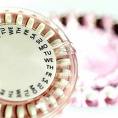 As the frequency of my migraine episodes has reduced this year, I was finally able to tell that I always get a migraine the first and second or third day of my period. Today once again provided confirmation.
As the frequency of my migraine episodes has reduced this year, I was finally able to tell that I always get a migraine the first and second or third day of my period. Today once again provided confirmation.
My plan was to try hormonal birth control, like the pill, as a preventive. Researching this post has me reconsidering. Turns out women with migraine who use birth control pills are eight times more likely to have a stroke than women who don’t. This applies to everyone with migraine, not just those with aura (who are twice as likely to have a stroke than migraineurs who don’t have visual auras).
Other treatment options exist. Most of them I’ve already taken without success. Magnesium, which I think is responsible for decreasing the frequency of my migraines, is a common treatment. Unfortunately I’m already at the highest dose of magnesium I appear to be able to tolerate without extreme nausea.
I found on headache specialist Christina Peterson’s website that a small study of black cohosh shows it may be effective in treating menstrually associated migraine. Because there has only been one study, there is no confirmation that it works. Nonetheless, I’ll be researching black cohosh extensively. It is in the same family as rununculus, one of my favorite flowers — maybe that’s a sign it will help my head!
I thought hormonal birth control would be the ticket. A stroke would certainly be worse than having two more migraines a month.
If your migraines are associated with your menstrual cycle, please let me know if you’ve found an effective treatment. Leave a comment below or respond to the forum post with your suggestions.
Related Posts:
